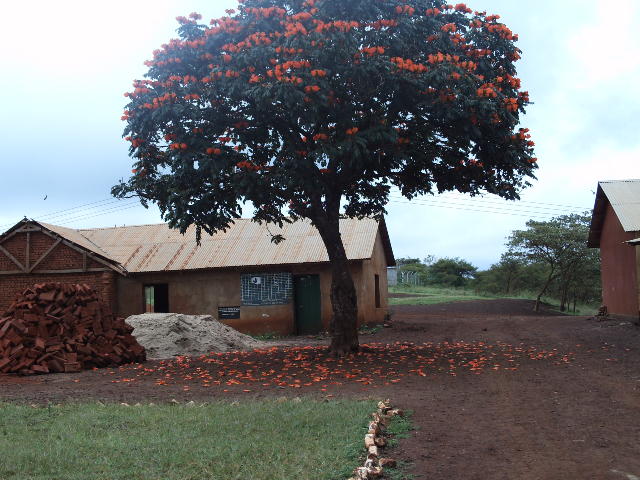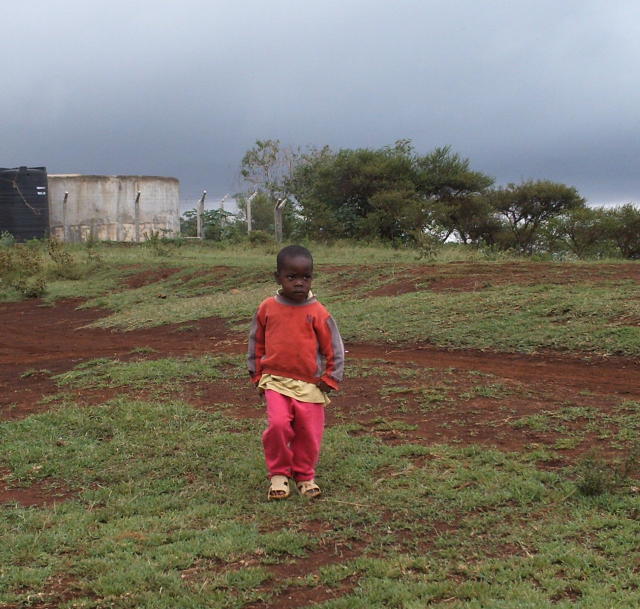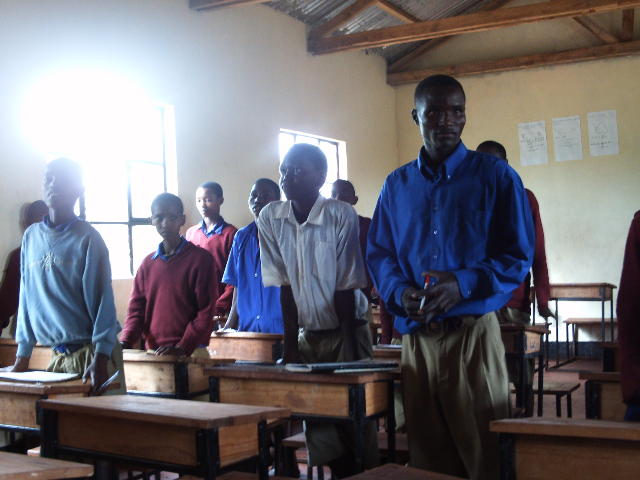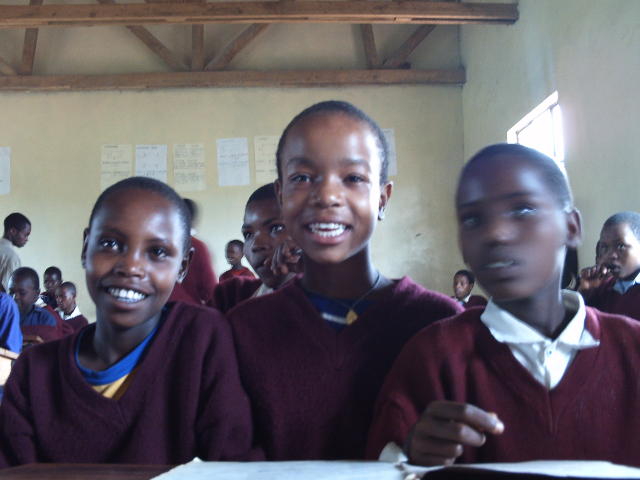Ngorongoro Crater
Best viewed at 1440 X 900 pixels. Any resolution lower than this will result in weird formats and text/image placment.
The rain finally stopped around 1:00am. I am thinking, will it rain all day tomorrow?
Sunrise was not clear, but it wasn't raining. After a quick breakfast we headed for the Land Cruisers and a short drive to the park's entrance.
But first, we would visit a local school in Karatu that receives support
from Overseas Travel Adventure. Like
all schools today, they are in need
of computers and software. We visited a seventh grade class that was
studying for some upcoming exams. The grounds were clean and children welcomed
a chance to practise their English with us.


The school had this beautiful tree in the center of the courtyard. This little one was too young for school.


Boys on the left and girls on the right.
Ngorongoro Crater here we come!
The short drive to park entrance took about 15 minutes. We checked in and
most people took advantage of make a Happy House
visit since we didnt know when we'd have the opportunity again.
Bwana Tony and Ma Joan @ the entrance of Ngorongoro Crater National Park
One thing we discovered at the entrance is that the baboons will enter a
vehicle, if it's left open, and take whatever they can. Most of the the time
they
will take food items but they have been know to take the keys from the ignition.
We closed the windows to the cruiser before getting out.
We're off. The clouds were still hanging low as we climbed higher and higher
from 1650 meters to over 2500 meter. Then we broke out of the clouds
and
were in the highlands. The views were magnificent and here and there we would
see Maasai villages and the Maasai herding their cattle.
Finally we came to an unmarked turnoff and the next thing we knew we were heading down the side of the crater wall.
The road is on the right and ahead is Lake Magadi. The shilouetted tree in the foreground is a Candlelabra cactus.
The crater is the largest unflooded volcanic
crater in the world. Unlike the Yellowstone caldera, this one is intact.
It was formed about
2.1 millions years ago. The Yellowstone caldera was formed around 2.4 million
years ago. Ngorongoro crater is roughly 12 miles in diameter
and over 1800 feet deep. It has wet and dry seasons and hosts over 25,000
creatures throughout the year. Within the crater are several lakes, a swamp
and
a forest, all of which host different fauna and flora. Black rhinos
have a safe habitat here due to active anti-poaching patrols. Bull elephants
are
the only elephants found in the crater. Numerous grazing animals, along with
their predators are found within the crater.
Here is a sampling of wildlife we saw during our day long trip into the crater.
Ngorongoro Crater Photo Album.